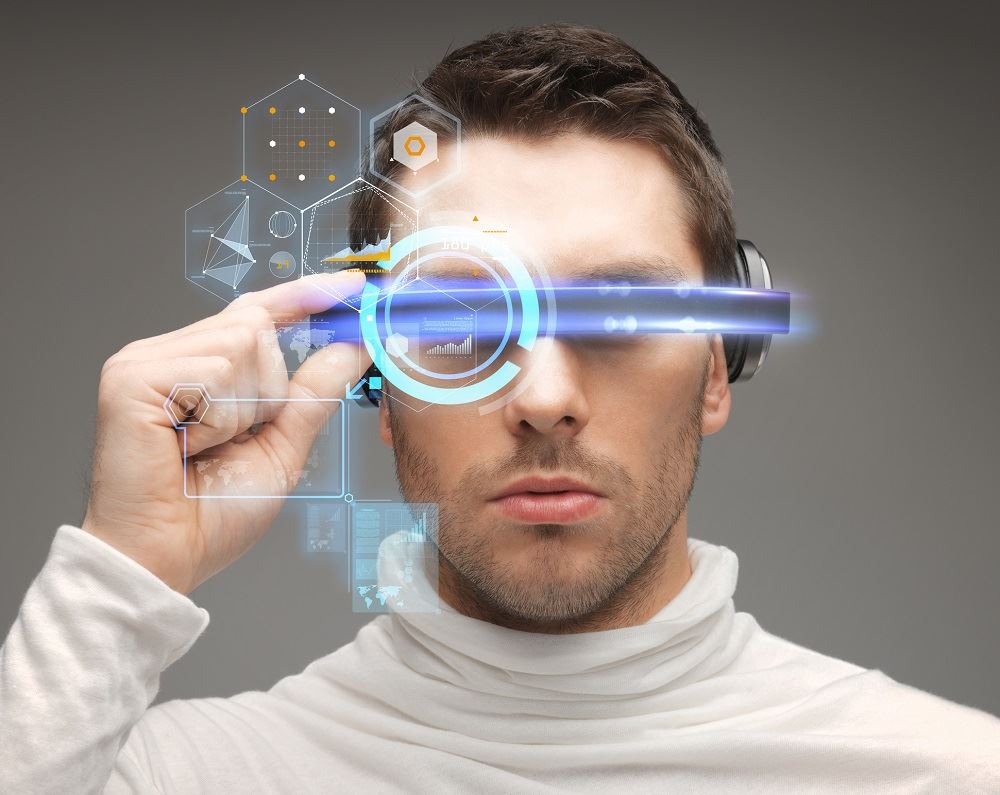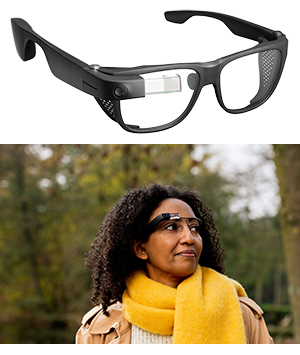Cutting-edge Solutions in Assistive Technology for Visual Impairment
The landscape of assistive innovation for visual disability is progressing rapidly, offering a variety of ingenious services that improve ease of access and freedom. From sophisticated mobile phone applications that help with navigation to wearable devices developed for real-time guidance, these devices are improving the experiences of those with aesthetic impairments. The assimilation of wise home modern technologies and academic resources has the potential to foster greater neighborhood interaction. However, the implications of these developments raise important concerns concerning their availability and performance in varied contexts, warranting a more detailed assessment of their broader effect.
Improvements in Mobile Phone Applications
In recent times, advancements in mobile phone applications have substantially changed the landscape of assistive innovation for people with aesthetic problems. These applications take advantage of the effective sensing units and abilities of contemporary smartphones to supply users with tools that improve freedom and ease of access in their everyday lives.
Significant among these developments are applications made for item recognition, which utilize the smartphone's video camera to identify products and offer spoken summaries. Such functions equip individuals to navigate their environments a lot more properly, whether recognizing products in shops or finding individual belongings at home. Furthermore, text-to-speech applications have actually improved considerably, allowing individuals to capture printed text via their device's electronic camera and receive instant audio responses, thus assisting in analysis and understanding.
Navigation applications tailored for aesthetically damaged individuals have likewise emerged, using auditory support and thorough area info. These tools supply essential assistance for mobility, enabling individuals to go across unknown rooms with confidence. Furthermore, community-driven applications have actually fostered social communication and resource sharing amongst individuals with aesthetic impairments, producing an encouraging network that improves their top quality of life. Generally, mobile phone applications have actually become vital allies in promoting freedom and access for individuals with aesthetic impairments.
Wearable Gadgets for Navigation
Wearable tools for navigating have actually emerged as a groundbreaking remedy for individuals with aesthetic problems, supplying hands-free aid that improves flexibility and alignment. These gadgets typically utilize advanced modern technologies, including GPS, ultrasonic sensors, and fabricated knowledge, to provide real-time feedback and direction to individuals as they navigate their environment.
One remarkable instance of wearable navigating technology is smart glasses, which can detect barriers and relay auditory or haptic feedback to the wearer, enabling reliable and safe movement in different settings. Various other tools, such as vests and belts outfitted with sensors, can in a similar way educate users of their environments by supplying informs concerning neighboring items or changes in surface.
Furthermore, numerous wearable devices incorporate with smartphone applications, making it possible for customers to tailor their navigation choices and obtain customized route suggestions. This customization can significantly enhance the individual experience, empowering individuals to take a trip with better self-confidence and independence.
As modern technology remains to develop, the possibility for wearable navigating devices to boost the lifestyle for people with visual impairments remains significant, leading the way for even more accessible and comprehensive settings.
Smart Home Innovation Integration

In addition, smart appliances furnished with responsive user interfaces or acoustic comments supply user-friendly interactions that cater particularly to the requirements of those with visual impairments. For instance, smart fridges can introduce their components and expiration dates, while wise stoves can lead customers with the cooking process with audio directions.
Home automation systems, such as wise buzzers and safety cams, use satisfaction by enabling users to obtain alerts and gain access to live feeds through their mobile tools, boosting personal safety and security (AI-powered visual aids). Furthermore, assimilation with tablet computers and smartphones makes certain that individuals can handle their home atmosphere from anywhere within their premises
As wise home modern technology proceeds to develop, it holds the prospective to change the living experiences of individuals with visual disabilities, promoting freedom and improving lifestyle in an increasingly connected world.

Educational Tools and Resources
Access to reliable academic devices and resources is essential for individuals with visual impairments, as it empowers them to engage completely in their discovering experiences. Numerous assistive innovations have actually been created to boost ease of access and foster independent discovering.
In addition, instructional software program especially designed for visually impaired customers supplies attributes such as high-contrast settings and adjustable text dimensions. These devices suit diverse knowing styles and make sure that trainees can customize their academic experience to their needs.
Furthermore, accessibility to electronic libraries and audio books broadens the variety of offered discovering materials, making it possible for pupils to discover subjects comprehensive without the restrictions imposed by typical print resources. Joint platforms that incorporate availability features additionally promote group projects, making sure that visually damaged pupils can contribute meaningfully alongside their peers.
Community Support and Interaction
A durable network of Continued area support and involvement is necessary for individuals with aesthetic problems, promoting a comprehensive atmosphere where they can thrive. Neighborhood companies, local campaigning for teams, and volunteers play a pivotal duty in supplying sources, information, and companionship, which are essential for enhancing the quality of life for those impacted by visual impairments.
Engagement activities such as workshops, gatherings, and support teams not just help with skill development yet additionally promote social interaction, decreasing feelings of isolation. These initiatives urge people to share experiences, obstacles, and successes, therefore reinforcing area bonds. Additionally, collaborations read the article with regional organizations can cause higher availability in public areas, additionally incorporating individuals with visual impairments into the community.
Innovation additionally enhances community involvement with on-line systems that provide virtual assistance groups and resources, allowing individuals to attach no matter geographical barriers. By using both in-person and electronic solutions, neighborhoods can produce a thorough assistance network. Eventually, cultivating cooperation among various stakeholders-- consisting of families, educators, and medical care specialists-- makes sure that people with aesthetic problems obtain the holistic support required to navigate every day life successfully and with dignity.
Conclusion
Ingenious solutions in assistive modern technology for aesthetic impairment considerably boost the quality of life for individuals facing these challenges. The combination of mobile phone applications, wearable tools, wise home technology, and educational tools fosters better freedom and access. Furthermore, community support and interaction additional equip aesthetically damaged people, promoting inclusivity and engagement in various facets of life. Collectively, these advancements not just change day-to-day experiences but additionally lead the means for a more equitable culture.
The landscape of assistive innovation for aesthetic disability is evolving quickly, providing a variety of ingenious remedies that enhance accessibility and freedom. Community-driven applications have promoted social communication and resource sharing among people with aesthetic impairments, creating a supportive network that enhances their high quality of life. In general, mobile phone applications have become optometry future outlook crucial allies in promoting freedom and access for people with visual disabilities.
Several people with visual problems are finding higher autonomy via the integration of smart home innovation.Cutting-edge solutions in assistive technology for visual impairment considerably improve the top quality of life for individuals facing these obstacles.